This post shows students and new users steps to install and use VMware Workstation Player on Ubuntu Linux. VMware Workstation Player is a cross-platform virtualization software that allows you to run multiple guest machines (virtual machines) simultaneously on a single host computer.
Although VMware Workstation Player is free, it’s not open-source software. If you’re looking for open-source virtualization software, you might want to try VirtualBox.
You must purchase a license if you use VMware Workstation Player in a commercial environment. Commercial users can also use VMware Workstation Pro, which offers more features than the Player.
If you’re a student or new user learning Linux, Ubuntu Linux is the easiest place to start learning. Ubuntu is the modern, open-source Linux operating system for desktops, servers, and other devices.
For more about VMware Workstation Player, please check its homepage.
When you’re ready to install VMware Workstation Player on Ubuntu Linux, follow the steps below:
For better performance, your system must meet the following requirements:
- 1.3GHz or faster 64-bit CPU.
- 2 GB RAM minimum/ 4GB RAM or more recommended.
How to install packages on Ubuntu Linux
To install VMware Workstation Player on Ubuntu, you must first install supporting packages and build dependencies.
To do that, run the commands below.
sudo apt update sudo apt install wget gcc build-essential linux-headers-generic linux-headers-$(uname -r)
How to download and install VMware Player
After installing the packages above, go and download VMware Workstation Player from its download page and install it. The link below gets you there.
https://my.vmware.com/web/vmware/downloads
Alternatively, run the commands below to download the latest version of VMware Workstation Player on the terminal console.
cd /tmp wget --user-agent="Mozilla/5.0 (X11; Ubuntu; Linux x86_64; rv:91.0) Gecko/20100101 Firefox/91.0" https://www.vmware.com/go/getplayer-linux
After downloading the above, run the commands below to make the package executable and install VMware Workstation Player.
chmod +x getplayer-linux sudo ./getplayer-linux
In Ubuntu, the installation will be run non-interactively. This means you won’t have to complete an installation wizard.
After a brief moment, the installation should complete with a success message similar to the one below. Once you see the message below, you’re done.
Extracting VMware Installer...done.
Installing VMware Player 16.1.2
Configuring...
[######################################################################] 100%
Installation was successful.
After the installation above, launch VMware Workstation Player from the Activities Dashboard. Click the Show Application button at the bottom left.
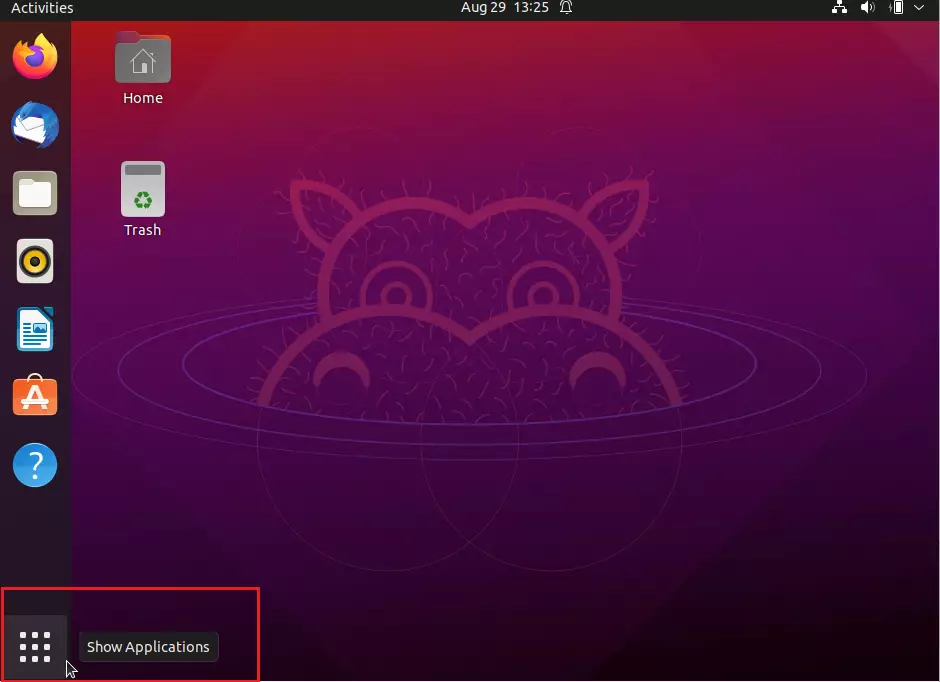
On the app’s dashboard, search for and select VMware Player.
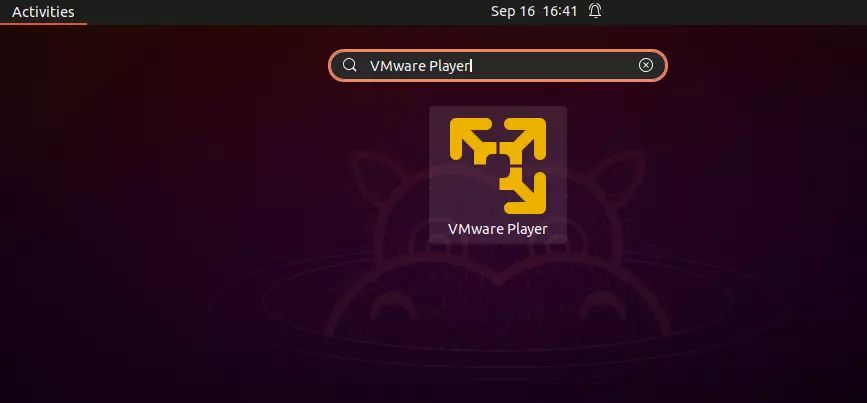
Once you click on the app, it will open its Welcome wizard. Accept the license terms to continue.
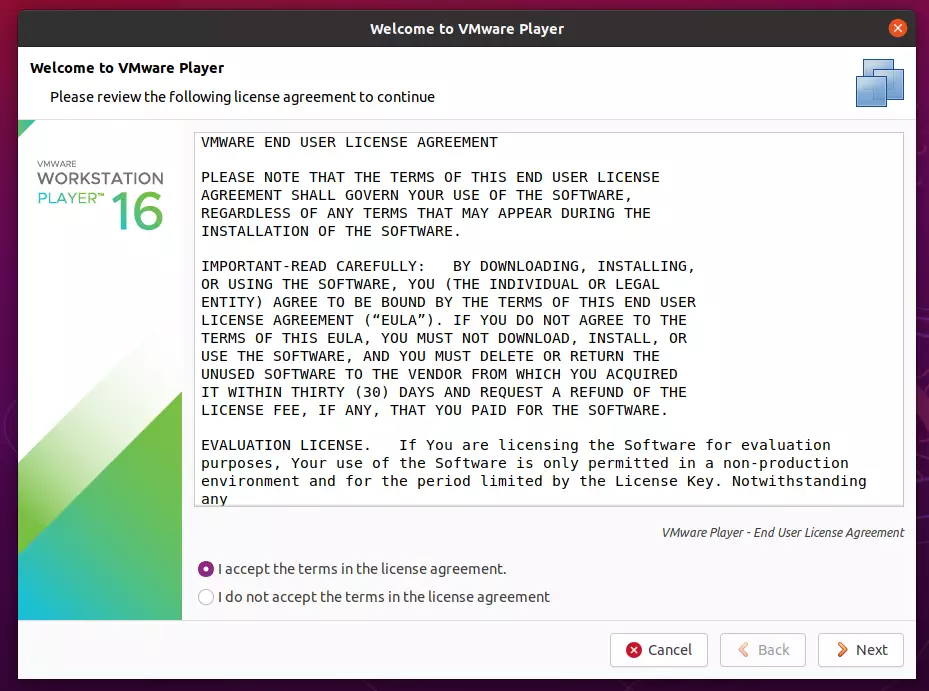
Accept to check for product updates on startup and continue
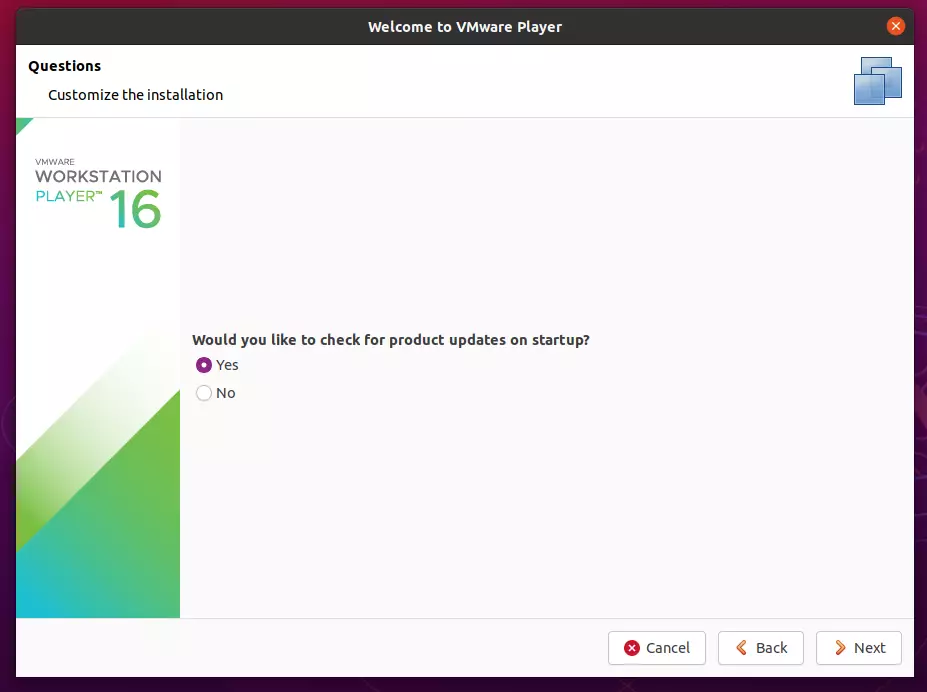
For personal use, choose “Use VMWare Player free for non-commercial use.” If you use it commercially, you should purchase a license key and enter it here or do it after installing the program.
Click Finish
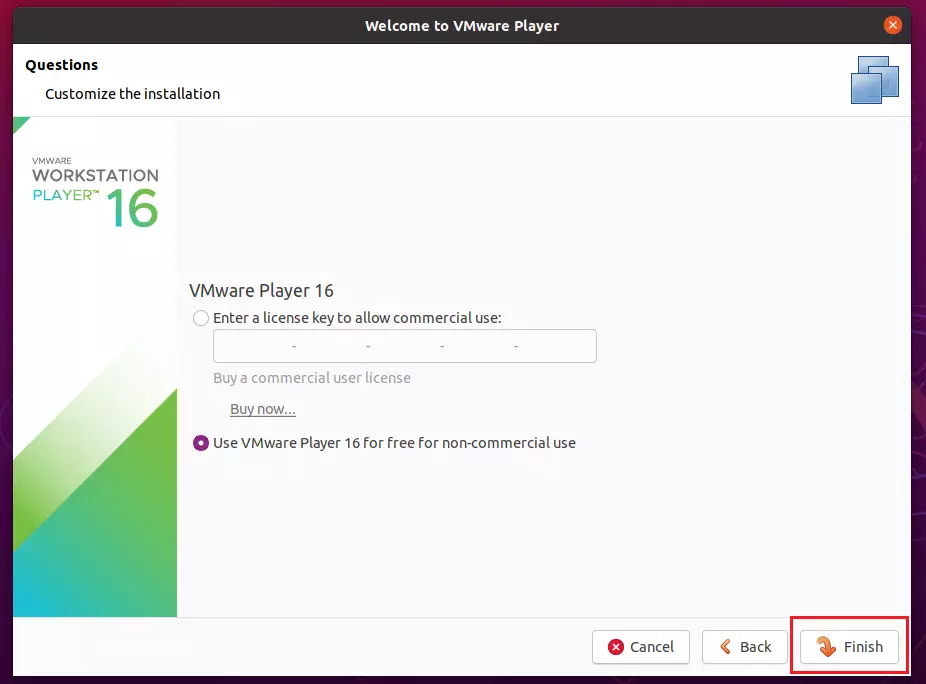
After that, the VMware Player console should open, ready to create guest machines.

The first thing you’ll want to do is update VMware Player components. To do that, click File and select Player Preferences.
On the preferences screen, click Download All Components Now button. Wait for all guest tools to finish downloading before creating VMs.

That should do it!
Conclusion:
This post showed you how to install and use VMware Workstation Player on Ubuntu Linux. Please use the comment form below if you find any errors above or have something to add.

Leave a Reply Cancel reply